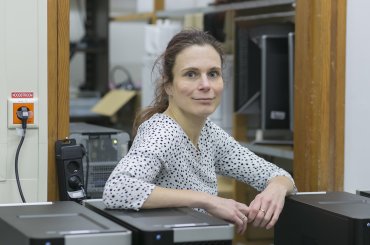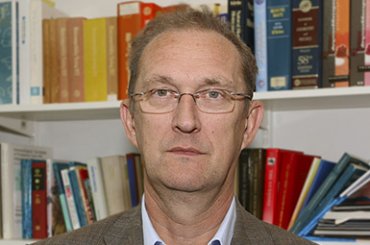Theoretical Biology and Bioinformatics
Biological systems are complex systems composed of many spatially distributed building blocks. Understanding the evolution, dynamics and emergent behavior of complex biological systems requires a systems biology approach, involving quantitative biology, mathematical modelling, computer simulation and bioinformatics.

Rob de Boer: Theoretical Immunology
Through multidisciplinary work I attempt to improve our understanding of the functioning of the immune system in a quantitative manner. We use mathematical modeling and bioinformatics to find mechanistic and quantitative interpretations of the typically complex data obtained in the laboratories of close collaborators.

Berend Snel: Integrative Bioinformatics and Evolutionary Genomics
My main scientific interest is in utilizing "omics" data and especially genomes to understand function and evolution of complex biological systems.

Kirsten ten Tusscher: Computational Developmental and Evolutionary Biology
I develop multi-scale computational models to unravel pattern formation during development. I focus on the growth and patterning of the major body axis in animals and plants. A major aim is to find general evolutionary and developmental design principles.

Paulien Hogeweg: Multilevel evolution
The aim of my research is to understand biotic systems as dynamic information processing systems at many interconnected levels. Within this framework my current research focuses on evolutionary dynamics and morphogenesis.

Can Kesmir: Immunological Bioinformatics
Vertebrate cells present short peptides from internal proteins to signal to the immune system. I develop and apply bioinformatic methods to identify antigenic peptides in the proteome of pathogens, tumors, and hosts, and study how these peptides signal to the immune system.

Ronald Bontrop: Immunogenetics
We study the immune systems of primates and their co-evolution with pathogens by a comparative genetics approach, focussing on the genes of the Major Histocompatibility Complex (MHC) and Killer Cell Immunoglobulin-like receptors (KIR). The MHC is associated with susceptibility and resistance to a myriad of diseases.

Rutger Hermsen: Evolution in Heterogeneous Environments and Bacterial Growth
I study biological evolution in heterogeneous environments using theoretical (mathematical) models, and aim to understand the growth of bacteria on mixed-substrate media based on coarse-grained, systems-level constraints and principles.

Bas Dutilh: Metagenomics
Metagenomics is one of the most important tools to explore our microbial world. We develop innovative bioinformatic tools to study metagenomes with applications from ecology to medicine.

Micheal Seidl: Microbial Genome Evolution
The aim of our research is to study the evolution and function of eukaryotic microbes through (comparative) genomics. We specifically focus on co-evolutionary arms races between pathogens with their hosts.

Vivek Bhardwaj: Quantitative Biology and Data Integration
Our lab develops new data science and bioinformatics methods to analyse data from quantitative (epi)genomics technologies and applies them to understand cell fate decisions.




